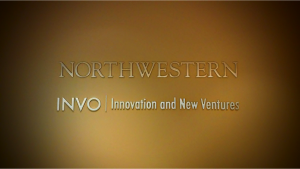Hello again!
In the first and second posts we have introduced ourselves, the Kellogg project and the concept of technology transfer. Now it’s time to look at some of the inventions at Northwestern that have the potential of becoming commercial products.
INVO’s, and therefore Northwestern’s, IP portfolio is quite impressive: there are currently more than 450 patents published on their home page. Anyone can view these inventions, and they are available for licensing for interested parties such as startups, larger companies or public organizations. All of these patents originate from research carried out at Northwestern University.
Around 50% of the available inventions are related to life science (e.g. drug discovery, biomarkers and medical devices), while the other 50% is mostly related to physical sciences (e.g. nanotechnology, energy, environment, chemistry and semiconductors). Here are a few recent, interesting additions to Northwestern’s public portfolio of inventions:
1. High efficiency lead free Perovskite solar cells
2. Adhesive hydrogel to replace sutures
3. Computer algorithm to plan the location of charging stations for electrical cars
It could be useful for ÅA-researchers to spend some time digging through INVO’s IP portfolio. Be careful not to get lost in there, the variety of university research that potentially could be commercialized is amazing! Most researchers are probably surprised to see this, we certainly were.
A striking trend we’ve noticed is that inventions originating from social sciences are almost completely lacking. We think there could be room for improvement. Excellent research is carried out at ÅA for example within minority research, art history and many other disciplines related to humanities. Maybe ÅA could be a pioneer in translating research from these areas to commercial products and services that could benefit a larger part of the society?
Now let’s go back to INVO. Say that a startup company finds a ground-breaking new technology on the home page. They contact INVO and license the technology that ultimately leads to the launch of a new product. As stated in the licensing agreement, they pay licenses based on the revenues generated by the new product. You might be wondering who gets the money? Generally speaking part of the licensing income goes back to the university and part of it goes to the inventors. At Northwestern, 33% of licensing income goes to the inventors, as described in the university patent and invention policy. At ÅA the corresponding number is 50% (this is a good deal!). Consequentially, this system is potentially profitable for the inventor (e.g. a PhD student together with his Professor), as well as for the university.
As discussed in the previous blog post, this can be an important source for
funding even more research – this is the case at Northwestern.
So let’s get to it!
Stay tuned for more interesting stuff from Chicago -K&F

